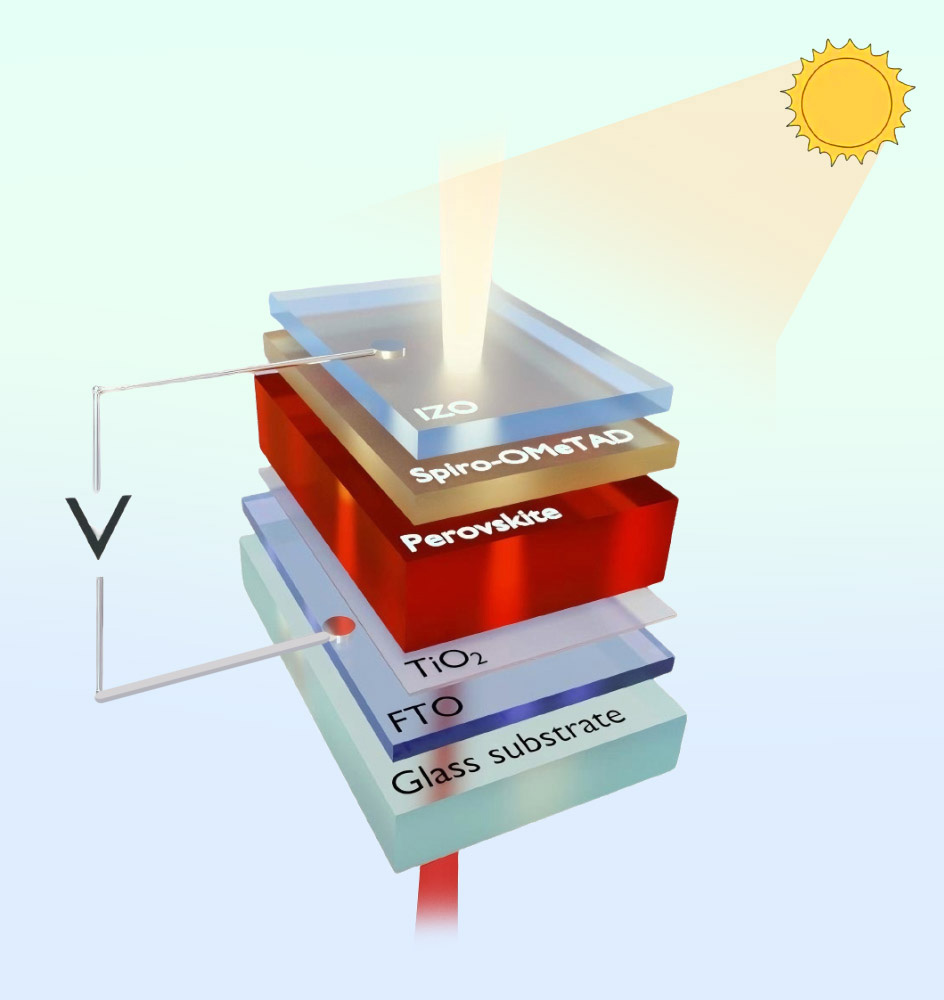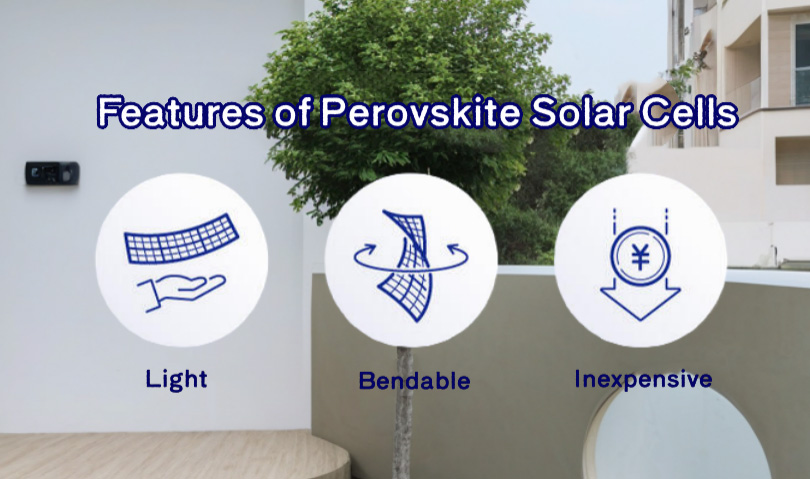What Are Perovskite Solar Cells?

The solar energy landscape is dominated by familiar, blue-black silicon panels. But a revolution is brewing in labs worldwide, promising a brighter, more versatile future for solar power. The star of this revolution is the Perovskite Solar Cell (PSC).
But what are perovskite solar cells (PSCs)? This groundbreaking technology, often referred to as Perovskite PV, is a type of solar cell that uses a unique class of materials to convert sunlight into electricity with unprecedented efficiency and potential for low-cost production. They are not just an improvement; they are a potential paradigm shift.

How Do Perovskite Solar Cells Work?
Understanding how do perovskite solar cells work is key to appreciating their potential. At their heart is a perovskite-structured compound, typically a hybrid organic-inorganic lead or tin halide-based material. This layer is the powerhouse.
In simple terms:
- >> Light Absorption: When sunlight hits the perovskite layer, it absorbs photons, which energizes its electrons, creating pairs of negative electrons and positive "holes."
- >> Charge Separation: The unique crystal structure of the perovskite material easily allows these electron-hole pairs to split.
- >> Charge Transport: These separated charges then travel through different layers within the cell towards the electrodes.
- >> Electricity Generation: This movement of charges creates a direct current (DC) that can be used to power our homes and devices.

This process is remarkably efficient, allowing perovskite cells to be much thinner than silicon cells while capturing a similar amount of light.
Key Advantages and Current Challenges
The excitement around Perovskite Solar Cells is driven by a compelling set of perovskite solar cell advantages:

- ⭐High Efficiency: Lab-scale cells have achieved efficiencies over 26%, rivaling the best silicon cells, with a theoretical limit even higher.
- ⭐ Low-Cost & Simple Manufacturing: They can be made from abundant materials using simple solution-based processes, like printing, which could drastically reduce production costs.
- ⭐Flexibility and Lightweight: Unlike rigid silicon, Perovskite solar panels can be made on flexible substrates, opening doors for applications on curved surfaces, vehicles, and flexible solar panels for portable devices.
However, the path to mass adoption isn't without obstacles. The primary challenge is long-term stability, as perovskite materials can degrade when exposed to moisture, oxygen, and prolonged heat. Significant research is focused on robust encapsulation and new material compositions to solve this.
Perovskite vs. Silicon and LiFePO4: Clearing the Confusion
It's crucial to understand the difference between Perovskite solar cells and other technologies like LiFePO4 battery cells. A common query is perovskite vs LiFePO4—but this is a comparison of two fundamentally different components. The tables below clarify the key distinctions.
Perovskite Solar Cells vs. Silicon Solar Cells
This is a battle of generation—comparing two technologies that compete to convert sunlight into electricity.
| Feature | Perovskite Solar Cells | Silicon Solar Cells |
| Technology Type | Emerging Thin-Film Photovoltaic | Established, Crystalline Photovoltaic |
| Primary Material | Perovskite crystalline compound | Highly purified Silicon |
| Efficiency Potential | Very high (>26% in labs), rapid progress | High (~27% practical limit for single-junction), mature |
| Manufacturing & Cost | Potentially low-cost, uses solution processing (e.g., printing) | Energy-intensive, high-temperature processing, higher cost |
| Form Factor | Can be lightweight, flexible, and semi-transparent | Typically rigid, heavy, and opaque |
| Key Advantage | High efficiency potential, versatility, low-cost forecast | Proven long-term stability (25+ years), high reliability |
| Key Challenge | Long-term stability under environmental stress | Lower efficiency ceiling, bulky and rigid |
Perovskite vs. LiFePO4 Battery Cells
This is the difference between generation and storage. They are not competitors but complementary partners in a solar energy system.
| Feature | Perovskite Solar Cells | LiFePO4 Battery Cells |
| Core Function | Generate electricity from sunlight | Store electrical energy for later use |
| Technology Type | Photovoltaic (PV) Generation | Electrochemical Energy Storage |
| Primary Metric | Power Conversion Efficiency (%) | Energy Density (Wh/kg), Cycle Life (charges) |
| Input & Output | Input: Sunlight; Output: Electricity | Input & Output: Electricity |
| Role in a System | The power generator (e.g., on the roof) | The power bank (e.g., in a garage or off-grid system) |
| Complementarity | Generates clean power that can be stored in a battery. | Stores power generated by solar panels for use at night or on cloudy days. |
The Bottom Line: The perovskite vs silicon solar cell debate is about which material is better at generating electricity. In contrast, the comparison of Perovskite vs. LiFePO4 is between a power plant and a power bank. Understanding this functional difference is key to seeing how these technologies can work together to create a complete renewable energy solution.
Market Outlook and The Future of Solar Energy
The perovskite solar cell market is poised for explosive growth as stability issues are resolved. The most immediate trend is the development of perovskite-silicon "tandem" cells, which stack the two technologies to capture a broader range of the solar spectrum and smash efficiency records.
With ongoing advancements in encapsulation and the exploration of lead-free alternatives, Perovskite PV is expected to move from labs to our rooftops and beyond within this decade. They are a cornerstone of the solar energy future, promising to make clean power more accessible, affordable, and integrated into our daily lives than ever before.
Conclusion
Perovskite Solar Cells represent more than just a new gadget; they symbolize a dynamic and promising path forward for renewable energy. By offering a blend of high efficiency, low cost, and revolutionary flexibility, they have the potential to redefine how and where we harness the sun's power. While challenges remain, the relentless pace of innovation suggests that these versatile cells will play a leading role in shaping our solar energy future.
FAQs: Perovskite Solar Cells Quick Questions
Q1. What is the main problem with perovskite solar cells?
The primary challenge is long-term stability. Perovskite materials are sensitive to moisture, oxygen, and continuous heat, which can cause them to degrade faster than traditional silicon cells. However, significant progress is being made with improved encapsulation techniques and new material compositions to solve this issue.
Q2. Why are perovskite solar cells not used?
The most efficient perovskite cells currently contain a small amount of lead, raising environmental and health concerns. Researchers are actively developing high-efficiency, lead-free alternatives using materials like tin to create non-toxic perovskite solar panels.
Q3. Why is perovskite better than silicon?
Perovskite solar cells hold potential advantages over silicon in several areas: they can be more efficient in theory, significantly cheaper to manufacture, and made into flexible solar panels. However, silicon currently has the advantage of proven long-term stability and reliability over decades.
Q4. Can I use perovskite solar panels with home battery storage?
Absolutely. In fact, they are a perfect match. PSC solar panels on your roof would generate electricity, which can then be stored in a home battery system (like a LiFePO4 battery) for use at night. This creates a robust and self-sufficient solar energy system.
Q5. How long do perovskite solar cells last?
The lifetime of perovskite cells is the focus of intense research. While early versions degraded quickly, recent advancements have pushed the operational stability of test cells to thousands of hours. The goal is to match silicon's 25-year lifespan, and progress is moving rapidly in that direction.
Q6. Are perovskite solar cells available to buy now?
As of now, high-performance, standalone perovskite solar panels are not widely available for consumer purchase at your local hardware store. The technology is still in the final stages of research, development, and scaling up for mass production. However, we are on the cusp of commercialization. Several companies have built pilot production lines and are working towards bringing products to market. The first widespread commercial application is likely to be perovskite-silicon tandem solar cells, which could hit the market within the next few years, offering significantly higher efficiency than silicon alone. So, while you can't buy them for your home today, they are expected to become available in the near future.
Post time: Oct-22-2025

